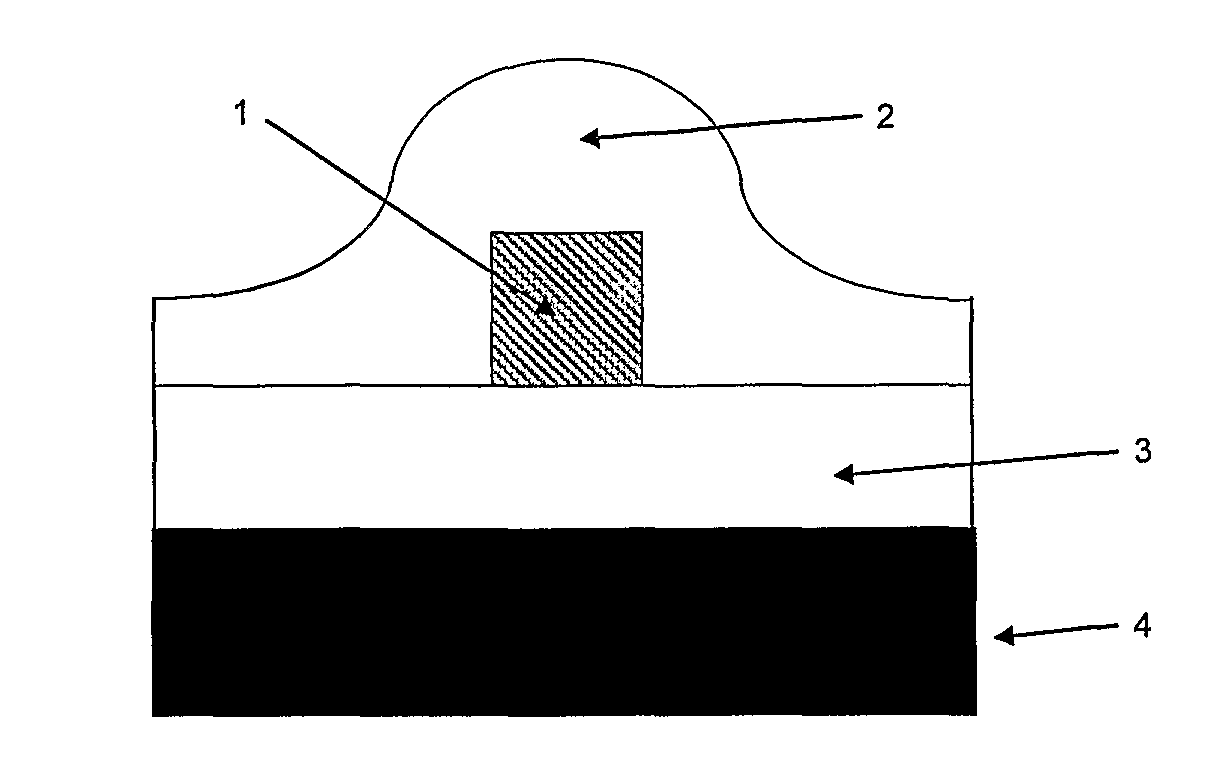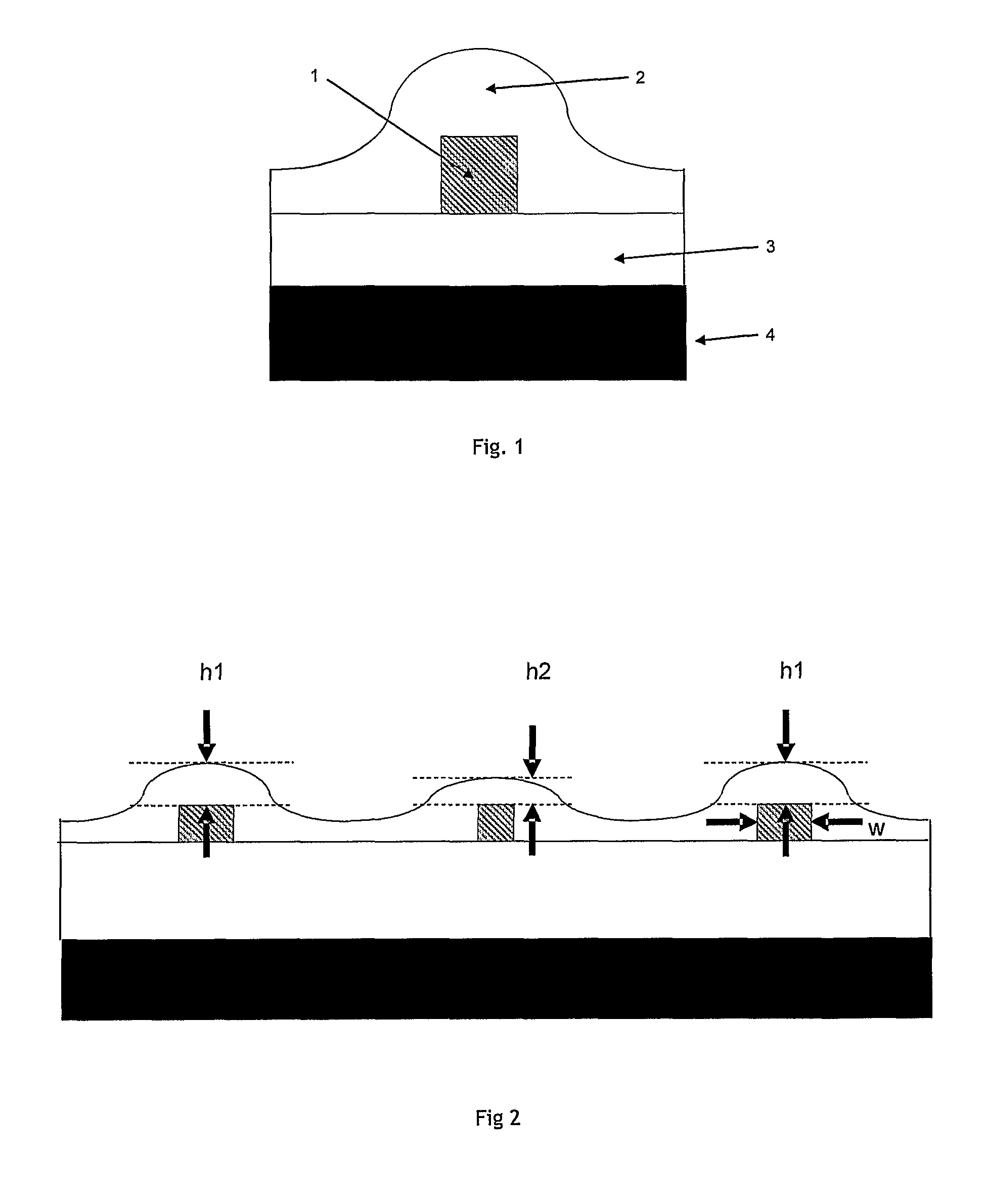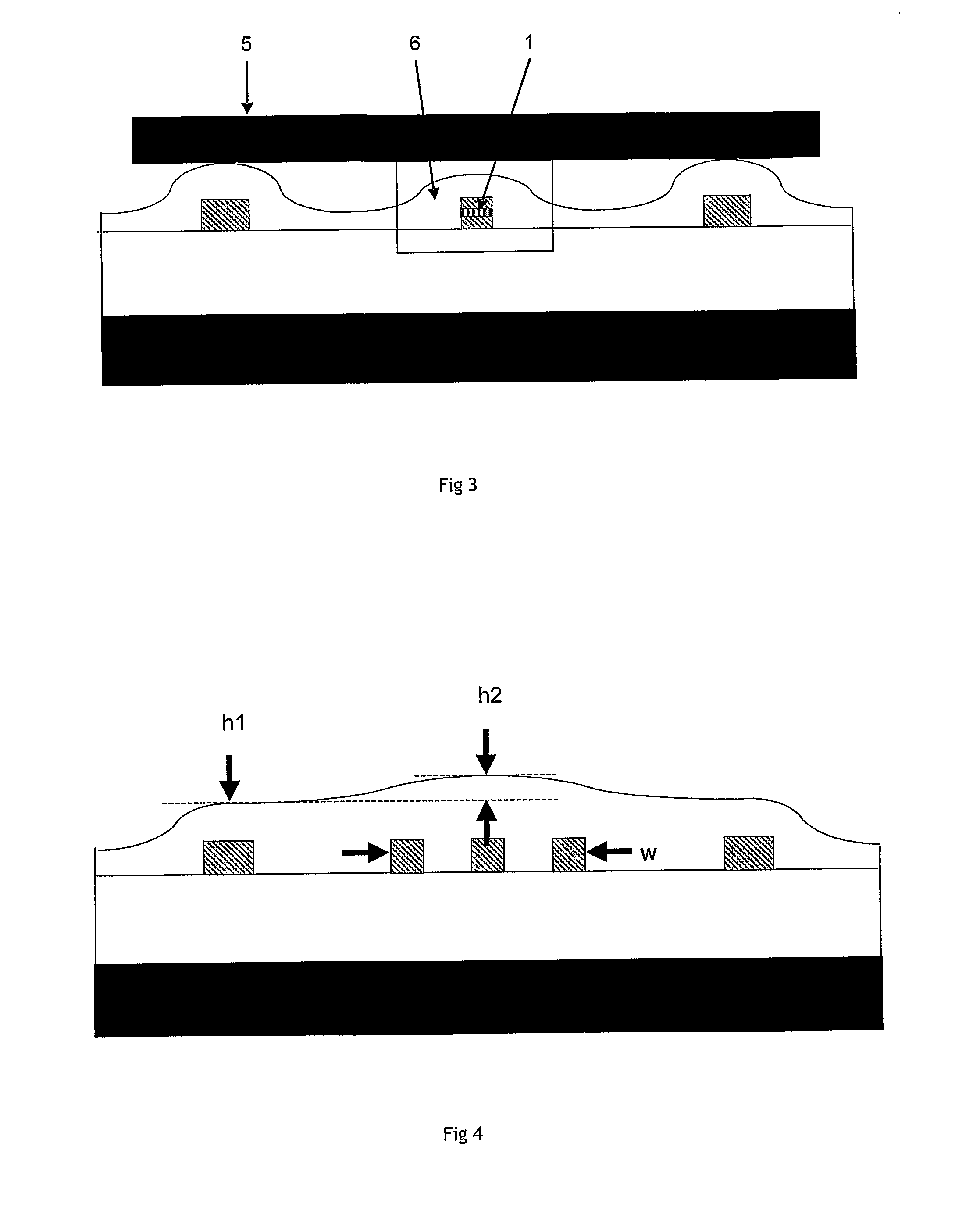Method of Aligning Optical Components With Waveguides
a waveguide and optical component technology, applied in the direction of optical waveguide light guide, instruments, electrical equipment, etc., can solve the problems of increasing the susceptibility of the alignment process, limiting the vertical evanescent coupling of components, and preventing the straightforward integration of non-waveguide components such as free space optical isolators and thin film filters, so as to reduce the sensitivity of the placement of a hybrid optical component to dust and other contamination on the waveguide surfa
- Summary
- Abstract
- Description
- Claims
- Application Information
AI Technical Summary
Benefits of technology
Problems solved by technology
Method used
Image
Examples
Embodiment Construction
[0024]Square (or rectangular) waveguide cross sections are common in planar waveguide devices, where the core cross section can have linear dimensions of the order of a few to several microns in each direction for single mode operation. FIG. 1 shows a typical configuration of such a planar waveguide device. The waveguide core 1 sits on a buffer layer 3 formed of a material of lower refractive index than the waveguide core 1. The buffer layer 3, in turn, sits on a suitable substrate 4. Typically, the waveguide core 1 is applied to the buffer layer 3 as a continuous layer and portions of the waveguide material are removed, for example by etching, to leave a pattern of core material. For this reason, the each waveguide core has the same height above the buffer layer 3.
[0025]A uniform thickness of cladding layer 2 is deposited on top of the waveguide core 1 (using one of a number of possible deposition techniques). The cladding layer 2 is substantially planar in regions that do not cont...
PUM
 Login to View More
Login to View More Abstract
Description
Claims
Application Information
 Login to View More
Login to View More - R&D
- Intellectual Property
- Life Sciences
- Materials
- Tech Scout
- Unparalleled Data Quality
- Higher Quality Content
- 60% Fewer Hallucinations
Browse by: Latest US Patents, China's latest patents, Technical Efficacy Thesaurus, Application Domain, Technology Topic, Popular Technical Reports.
© 2025 PatSnap. All rights reserved.Legal|Privacy policy|Modern Slavery Act Transparency Statement|Sitemap|About US| Contact US: help@patsnap.com



